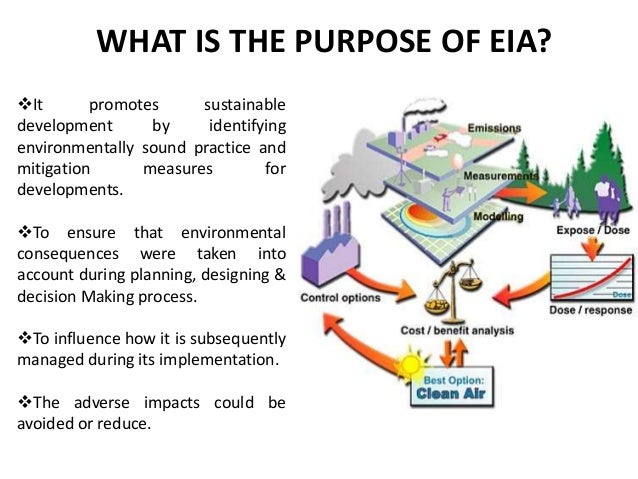Relevance: Prelims & Mains:G.S paper III: Environment: Conservation, environmental pollution and degradation, environmental impact assessment
Context:

• The government has put up for public consideration and comment the Draft Environmental Impact Assessment (EIA) Notification, 2020. If put into force will replace the EIA Notification of 2006 for all future projects. The EIA process scrutinizes the potential environmental impact and negative externalities of a proposed project. The assessment is carried out by an Expert Appraisal Committee (EAC), which consists of scientists and project management experts. The EAC frames the scope of the EIA study and a preliminary report is prepared.
Modus operandi:
• That report is published, and a public consultation process takes place, where objections can be heard including from project-affected people.
• The EAC can then make a final appraisal of the project and forward that to the regulatory authority, which is the Ministry of Environment and Forests (MoEF).
• The regulatory authority is ordinarily obliged to accept the decision of the EAC.
• The basis in global environmental law for the EIA is the “precautionary principle”.
• Environmental harm is often irreparable — one cannot reverse an oil spill.
• It is cheaper to avoid damage to the environment than to remedy it.
• We are legally bound to the precautionary principle under international treaties and obligations, as well as by Supreme Court judgments.
Unbiased assessment:
• Environmental regulation must balance damage to the environment with sustainable development and possible benefits of the project.
• An unbiased assessment must be made on a precautionary basis, before investment, jobs and infrastructure are put on the line.
• However, industries and business interests have long regarded EIA as a thorn in their side.
• Under the guise of streamlining the EIA process and bringing it in line with recent judgments, the Draft EIA Notification disables it, shrinks its scope and removes what teeth it did have.
• The most devastating blow to the EIA regime is the creation of an ex-post-facto clearance route.
Ex-Post facto clearance route:
• An EIA clearance was never sought or granted, and the construction of the project took place regardless.
• The project proponent can enter an assessment procedure, with some minor fines for the violations, and find its sins blessed.
• Where such ex-post-facto clearances were being granted previously, the courts cracked down on them as illegal.
• Therefore, what could not be ratified will now find itself notified.
• The legality of sidestepping the courts is questionable and will have to be tested.
• In short, the EIA regime will now carry the instrument of its demise in its text.
• It will become a business decision as to whether the law needs to be followed or the violation can be “managed”.
• The argument that this route will be an “exception” is difficult to believe in India. Our law has a long history of expanding the exception into the rule.
Lacking transparency:
• The draft notification also shortens the time for the public to furnish responses on the project.
• For project-affected people, who are frequently forest dwellers or otherwise do not have access to information and technology, this will make it harder to put forth representations.
• Monitoring requirements have been slackened.
• The draft EIA notification halves the frequency of reporting requirements from every six months to once a year and extends the validity period for approvals in critical sectors such as mining.
• The scope of the EIA regime is set to shrink. Industries that previously fell under the categories that required a full assessment have been downgraded.
• The construction industry will be one such beneficiary, where only the largest projects will be scrutinised fully.
Vague new category of projects:
• Defence and national security installations were always understandably exempt.
• A vague new category of projects “involving other strategic considerations” will also now be free from public consultation
requirements.
• Would a power plant fall into that category?
• Weakening the EIA process is essentially anti-democratic.
• For affected communities, where seismic shifts in the local environment can threaten livelihoods, flood a valley or destroy a forest, public consultation is a referendum on existential threats.
• To curtail it is to silence voices that are scarcely heard otherwise.
Anti-democratic:
• The government’s actions on environmental regulation (as opposed to its bon mots and rhetoric) show that it considers it an impediment to the ease of doing business.
• During the nationwide coronavirus lockdown, the MoEF has been working swiftly to clear projects, even carrying out public hearings over video conference.
• Where the Minister for Environment and Forests and the Minister for Heavy Industries and Public Enterprises are the same person, the conflict of interest is perfect and complete.
• Two charges that are oppositional are vested with the same person.
• The fruits of this lackadaisical approach to precautionary environmental regulation have been recently put on display.
Past examples:
• Oil India Limited’s oil wells in the Tinsukia district, Assam, only a few kilometres away from protected forests, went up in flames this month.
• Recent processes for expansion and modification apparently took place without fresh environmental clearance.
• A deadly gas leak at LG Polymers’ Visakhapatnam plant in May killed 12 people and harmed hundreds.
• What came to light after the disaster was that the plant had been operating without a valid environmental clearance for decades.
For more such notes, Articles, News & Views Join our Telegram Channel.
Click the link below to see the details about the UPSC –Civils courses offered by Triumph IAS. https://triumphias.com/pages-all-courses.php

